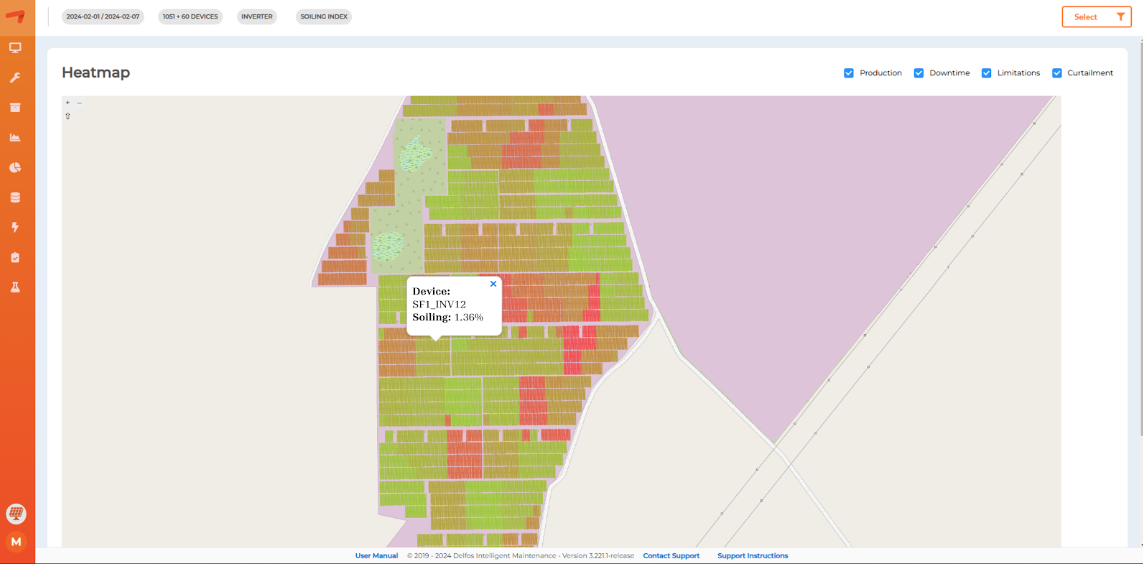Geo Heatmap for Solar: Pinpointing PV Underperformance with Geospatial Intelligence
.png)
In solar operations, detecting underperformance is not just about numbers, it's about knowing where the problem lies. For Performance Engineers, O&M teams, and Asset Managers, this is critical for fast and cost-effective interventions. Delfos' Geo Heatmap transforms traditional performance analysis by adding a spatial layer, turning operational data into visual insights mapped across your PV assets.
In this article, we’ll explore how the Geo Heatmap enhances visibility, accelerates diagnostics, and drives smarter field operations.
Why Geographic Performance Analysis Matters
Photovoltaic assets can span hundreds of hectares, with performance deviations often localized to specific components or zones. Without geographic context, teams risk spending hours investigating generalized alerts without locating the true root cause.
The Geo Heatmap answers this challenge by bringing location-based intelligence to KPIs, helping teams spot shading, soiling, or equipment issues down to a string level. It's the bridge between analytics and action.
What Is the Geo Heatmap?
The Geo Heatmap is an advanced visualization feature in the Delfos Solar Platform. It overlays real-time and historical KPIs on a visual map of your PV plant, offering users a layered geographic view of asset performance.
Key Functionalities:
- Superimposes KPIs on the plant layout
- Drill-down analysis to:
- Inverter level
- String box level
- String level
- Color-coded performance indicators for intuitive assessment
This spatial mapping transforms how solar professionals identify, diagnose, and act on underperformance.

Business & Technical Impact
Operational Efficiency
- Pinpoint issues faster: Locate faulty strings, shaded panels, or soiled zones in seconds.
- Reduce response time: Field teams navigate directly to the affected area, minimizing downtime.
O&M Cost Reduction
- Targeted cleaning & repairs: No more blanket cleaning: focus efforts where performance loss is measurable.
- Lower travel costs: Optimize technician routing using the geographic layout.
Better Decision-Making
- Integrate performance data with physical asset geography for high-confidence interventions.
Real-World Application
Imagine a 50 MW PV plant experiencing a drop in energy yield. Traditional analysis flags inverter 12 as underperforming, but only with the Geo Heatmap does the team discover that one string section is shaded by overgrown vegetation. With this insight, technicians are dispatched to clear the vegetation, restoring output without unnecessary equipment inspection.
This is the power of combining data + location. While many platforms offer basic layout views, Delfos delivers actionable geographic intelligence, driving faster diagnostics and field response.
From Insight to Impact
The Geo Heatmap brings clarity to complexity. By merging KPI analysis with spatial awareness, Delfos enables solar teams to see the problem, not just measure it.
If you’re ready to enhance your plant’s diagnostics and reduce O&M costs through smarter, faster decisions, it's time to see the Geo Heatmap in action.
Book a meeting
Let's connect and forge new partnerships
Custom Renewable Energy Solutions
Contact us today and join global operators who recovered up to 10% revenue and cut downtime by 18%

